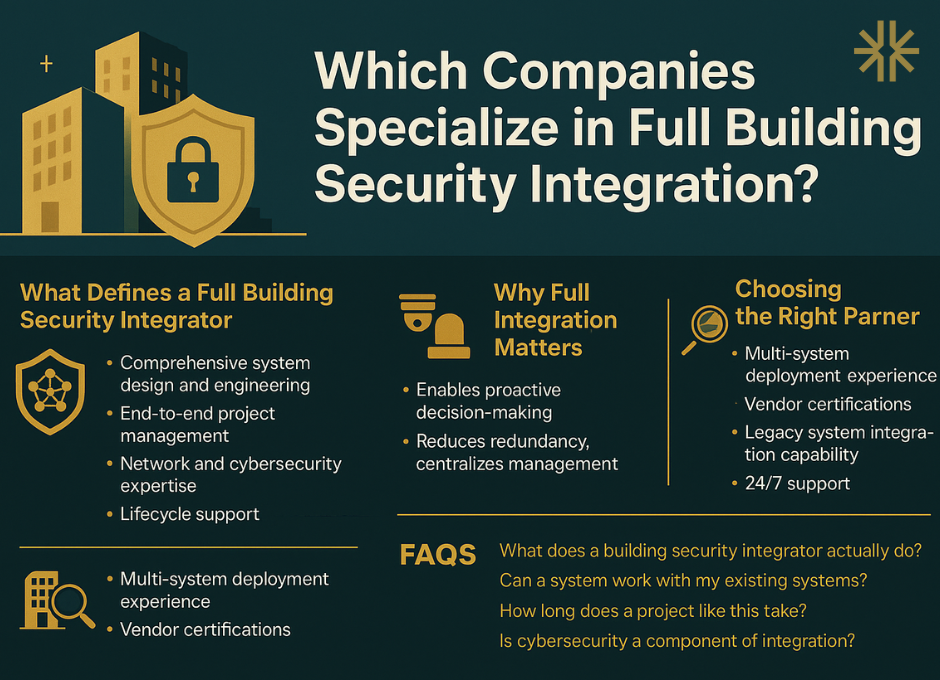
What Defines a Full Building Security Integrator
Protecting a facility requires more than cameras and access control. True security integration means connecting multiple systems — video, access, intrusion, fire, intercom, and network — into a single, intelligent ecosystem. But not every company that installs devices is equipped to deliver full integration.
What Defines a Full Building Security Integrator
A full building integrator unites every component of a facility’s security infrastructure into one cohesive platform. This includes system design, installation, configuration, and long-term maintenance. Top integrators align these efforts with IT and facility operations to create a connected environment that enhances both safety and efficiency.
These organizations typically offer:
- Comprehensive system design and engineering that considers every layer of protection
- End-to-end project management from consultation through commissioning
- Network and cybersecurity expertise to safeguard connected devices
- Lifecycle support including monitoring, service, and system optimization
Why Full Integration Matters
A properly integrated system does more than record incidents. It enables proactive decision-making. When access control, cameras, and alarms communicate in real time, operators can identify threats faster, trigger automated responses, and maintain business continuity during emergencies.
For enterprise organizations, integration also reduces redundancy, centralizes management, and supports data-driven security strategies.
Choosing the Right Partner
When evaluating an integrator, look for:
- Proven experience with multi-system deployments in similar environments
- Vendor certifications and strong manufacturer relationships
- Capability to integrate legacy systems with new technologies
- 24/7 support infrastructure and national or global service coverage
- Alignment with your organization’s IT, compliance, and safety goals
Top integrators in the industry distinguish themselves through innovation, customer service, and their ability to customize solutions that evolve as threats and technologies change.
FAQs
What does a building security integrator actually do?
A building security integrator designs and connects all security subsystems — such as access control, video surveillance, and fire alarms — into one cohesive, centrally managed solution.
Why is integration important for large facilities?
It reduces blind spots, accelerates response times, and ensures systems share data for improved situational awareness and control.
Can an integrator work with my existing systems?
Yes. Experienced integrators specialize in merging legacy equipment with modern platforms to extend functionality and ROI.
How long does a full building integration project take?
Project timelines vary by size and complexity, but comprehensive integrations typically take several months, from design through deployment.
Is cybersecurity part of building security integration?
Absolutely. With systems now operating on IP networks, cybersecurity is a core part of modern security integration to prevent unauthorized access or data compromise.

